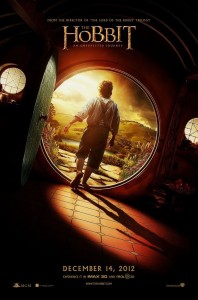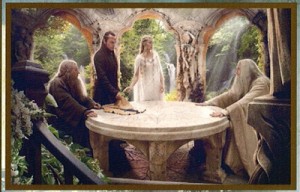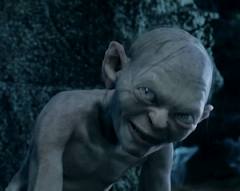 Peter Jackson fathered the magical world of Middle-Earth more than ten years ago with “The Fellowship of the Ring.” Shortly after, he followed with two equally successful and critically acclaimed sequels: “The Two Towers” and “The Return of the King.” The final film in the series even won 11 Academy Awards, tying the previous record held by “Titanic.” And the films catapulted Peter Jackson into the ranks of great modern directors. Though”The Hobbit” still possesses the basic framework and medieval mysticism as the Lord of the Rings, it lacks the emotional depth of the other three, and ultimately dulls in comparison. It is, though, at least worth a viewing.
Peter Jackson fathered the magical world of Middle-Earth more than ten years ago with “The Fellowship of the Ring.” Shortly after, he followed with two equally successful and critically acclaimed sequels: “The Two Towers” and “The Return of the King.” The final film in the series even won 11 Academy Awards, tying the previous record held by “Titanic.” And the films catapulted Peter Jackson into the ranks of great modern directors. Though”The Hobbit” still possesses the basic framework and medieval mysticism as the Lord of the Rings, it lacks the emotional depth of the other three, and ultimately dulls in comparison. It is, though, at least worth a viewing.
“The Hobbit” is a close adaptation of the first part of the novel. A young Bilbo Baggins sets out on an adventure with Gandalf the wizard and a company of dwarves, with the intention of re-taking the dwarf world from a dragon that had overtaken it many years prior. The opening of the movie appears at first hopeful, with a wide-ranging company of a well-chosen cast of dwarves. Included amongst them is a particularly faithful choice of Richard Armitage as stern and confident leader Thorin Oakenshield, who seems to imbibe every essential quality of the character from the novel. Ian McKellen is exceptional as always as Gandalf the Grey, though his older age now does show through at times. And the choice of Martin Freeman as the young Bilbo was, at first, questionable. But the actor grows on you as the film progresses.
Off on an adventure; the crew of dwarves, hobbit, and wizard encounter troubles on the way. And, though some of these scenes are fun, such as an initial fighting scene with orcs; some are misplaced and unexpected, seemingly thrown in the film just for the sake of action. An example is a scene with giant fighting rock monsters, which doesn’t serve any real purpose in the film’s storyline.

Jackson is sure to speckle plenty of characters from the original series, which is one of the strongpoints of the film. An example is a scene in the elvish kingdom Rivendell, in which we see a round-table meeting of familiar faces: Cate Blanchett reappears as the eerily monotoned Lady Galadriel; Christopher Lee, at 90 years old, appears as the good wizard Saruman (though we know this won’t last); and Hugo Weaving holds his own as the elf lord Elrond once again. Scenes like this, with a backdrop of a glinting sunrise casting shadows on the characters’ silhouettes; gives hope to the film as a whole.
By far the best scene in the movie is that where Bilbo and Gollum first meet, when Bilbo first gets the ring. Played out almost word for word from the novel, this refreshing scene is as heartfelt as any witnessed in the original series. Andy Serkis recreates his wide-eyed, innocently evil Gollum once again, and Freeman finally gets a chance to show some character development of Bilbo, reminding us why this movie is called “The Hobbit” and not “Thorin Oakenshield.” But, as soon as we return to form, the film’s tone is disrupted yet again.
In the original Lord of the Rings series, the action scenes existed for a reason. The battle for Helm’s Deep in “The Two Towers” was a last stand against Saruman’s army, and the scene, though long, is well-paced and beautifully shot. In contrast, the climactic scene of “The Hobbit,” in which the dwarves attempt to escape from an underground orc lair; is mindlessly violent and uninspired. And it plays out as if the final battle of the film. However, we soon learn that this is not the case, and are just as quickly thrown into another round of action, before even having a chance to breathe.
It is this awkward pacing that makes “The Hobbit” flawed. Though at times Jackson presents the sentimentality we so enjoyed in the previous movies, he overshadows this with over-the-top, purposeless action, and with frequently hollow and one-dimensional characters. Even Howard Shore’s score, coupled against wide-arching camera shots of the New Zealand landscape, cannot save the film. Though the movie may still be enjoyable for many and is, in some ways, a fun return to the world of Middle Earth, I am left wishing that perhaps they should have left well enough alone.

9:38 pm on January 3rd, 2014 1
[…] my review of the first “Hobbit” movie, subtitled “An Unexpected Journey,” I described […]